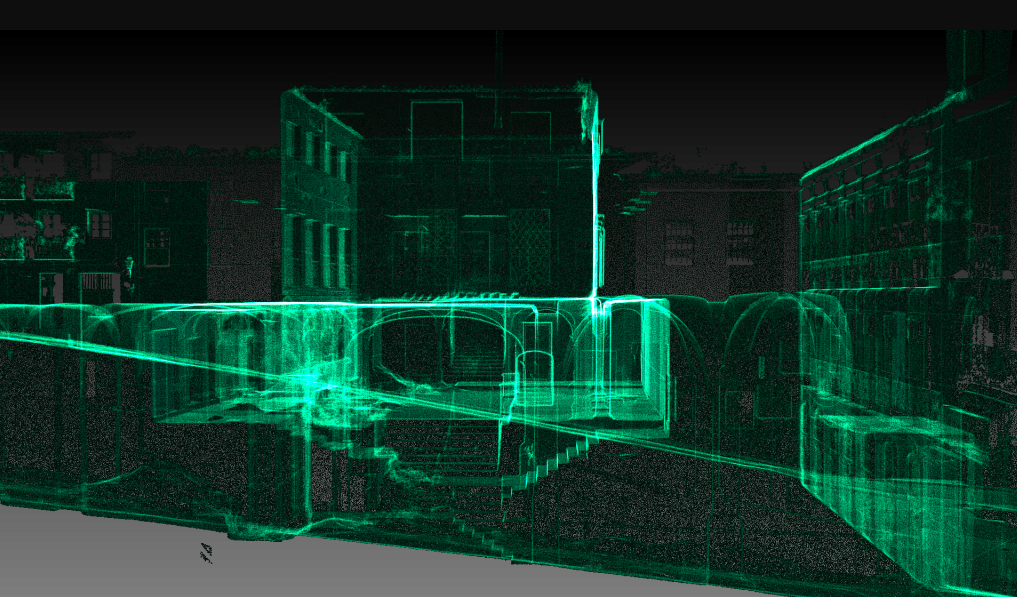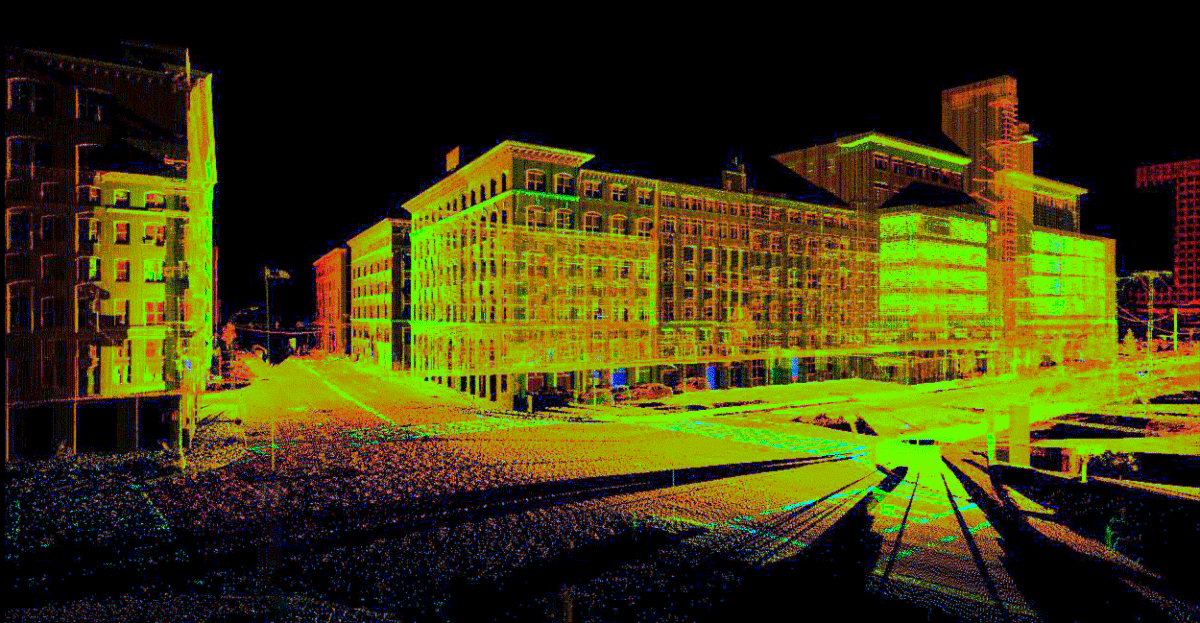Expert Strategies for Optimizing 3D Scanning in Architecture
Wiki Article
Exactly How 3D Laser Scanning Transforms Architectural Design and Construction Projects
3D laser scanning is changing the landscape of architectural style and construction. This technology supplies unrivaled precision in capturing existing atmospheres, which facilitates much better task preparation and execution. It minimizes errors while enhancing performance in various phases of advancement. The implications for partnership amongst designers, engineers, and various other stakeholders are substantial. These developments open up the door to brand-new design opportunities and innovative services. What lies ahead for this advancing technology?The Principles of 3D Laser Scanning Modern Technology
Although 3D laser scanning modern technology might seem complicated, its core concepts are transformative and uncomplicated for building layout. This modern technology uses laser beam of lights to record accurate measurements of physical frameworks, producing a thorough point cloud that represents the scanned environment. A laser scanner sends out quick pulses of light, measuring the time it considers the light to return, which permits for the computation of distances with amazing precision.The resulting point cloud can be exchanged a 3D version, giving engineers with vital aesthetic information. This version makes it possible for professionals to analyze and control style elements within their tasks, permitting for ingenious solutions and enhanced visualization. By employing 3D laser scanning, designers can better recognize the present conditions of a site, ensuring that brand-new styles harmonize with their surroundings. This combination of innovation right into building design notes a substantial innovation, cultivating imagination and precision in the area.

Enhancing Accuracy and Performance in Architectural Projects
As building projects increasingly require accuracy and rate, 3D laser scanning becomes a crucial device in enhancing both precision and performance. This technology catches millions of data points in a brief duration, producing exact and in-depth 3D versions of existing structures. The capacity to acquire exact measurements lowers the risk of mistakes throughout the style stage, allowing architects to imagine their jobs with unequaled quality.The rapid information collection procedure reduces the time spent on-site, enabling teams to concentrate on analysis and design renovations. With real-time information accessibility, changes can be made quickly, promoting a much more streamlined operations. The assimilation of 3D laser scanning right into building methods not only enhances measurement accuracy yet also enhances the general project timeline, helping with quicker decision-making. In a sector where accuracy is essential, this innovation stands as a transformative pressure, boosting the requirements of architectural style and construction tasks.
Improving Collaboration Amongst Stakeholders
While conventional architectural procedures commonly involve fragmented communication amongst stakeholders, 3D laser scanning promotes a much more natural collective atmosphere. By providing exact, high-resolution data, this modern technology permits architects, customers, designers, and contractors to run from a unified factor of recommendation. The detailed visualizations produced via laser scanning get rid of misinterpretations and obscurities, ensuring that all parties have accessibility to the exact same details.This openness enhances decision-making and motivates timely feedback, as stakeholders can quickly envision layout components and spatial relationships. Additionally, the integration of 3D scanning data into Structure Information Modeling (BIM) platforms further improves collaboration, enabling real-time updates and alterations. Such smooth communication not only reduces disputes yet also speeds up task timelines, as all stakeholders remain pop over here lined up throughout the style and building stages. Eventually, 3D laser scanning changes typical process into a much more joint and effective procedure, benefiting all parties involved.
Opening Creative Possibilities in Style
By enabling engineers to envision intricate elaborate information and spatial connections, 3D laser scanning exposes innovative possibilities in design. This technology permits precise mapping of existing environments, making it possible for engineers to explore ingenious principles that could have formerly seemed unwise. With extremely precise data, developers can trying out non-traditional types and materials, pressing the limits of typical architecture.Furthermore, the assimilation of 3D laser scanning into the layout process fosters partnership among multidisciplinary groups, encouraging the exchange of ideas and improving imagination. The comprehensive visualizations produced by this modern technology not just aid in identifying possible design challenges but also inspire solutions that may not have actually been thought about. Therefore, engineers can produce much more vibrant and interesting spaces that resonate with individuals while fulfilling functional demands. Ultimately, 3D laser scanning transforms the building landscape, empowering developers to recognize their visions with unprecedented precision and creativity.
The Future of 3D Laser Scanning in Architecture and Construction
The combination of 3D laser scanning right into architectural design not only boosts creative thinking however additionally establishes the phase for its advancing role in the future of architecture and building. As innovation developments, the precision and performance of laser scanning will continue to improve, enabling designers and home builders to create more complicated designs with these details precision - 3D Scanning. The usage of this innovation in real-time information collection will certainly promote far better decision-making, lowering mistakes and simplifying operationsFuture applications may include online and enhanced fact combinations, allowing stakeholders to picture tasks in immersive environments. In enhancement, as sustainability ends up being a priority, 3D laser scanning will certainly sustain the advancement of energy-efficient styles by providing in-depth understandings right into existing structures. As partnership among different techniques comes to be even more important, the capacity to share precise 3D versions will promote technology and boost job outcomes. Ultimately, 3D laser scanning will redefine requirements in architectural style and construction methods.
Frequently Asked Concerns
What Is the Cost of Applying 3D Laser Scanning Innovation?

For how long Does a Normal 3D Laser Scanning Task Take?
A typical 3D laser scanning job can take anywhere from a couple of hours to several days, depending on elements such as the job's dimension, complexity, and the level of detail required for accurate data capture.What Kinds Of Projects Benefit Most From 3D Laser Scanning?
3D laser scanning advantages different tasks, specifically large-scale constructions, historic remediations, and intricate renovations. It boosts accuracy in measurements, reduces errors, and supplies detailed information necessary for reliable planning and implementation in building layout and construction.
Are There Details Software Program Programs Required for 3D Laser Scans?
Yes, certain software application are essential for refining 3D laser scans. 3D Scanning. Popular choices consist of Autodesk ReCap, Faro Scene, and Leica Cyclone, each offering special attributes customized for visualizing and assessing scanned information properly in various jobsExactly How Does 3D Laser Scanning Influence Environmental Sustainability in Building And Construction?
3D laser scanning improves ecological sustainability in building by minimizing material waste, allowing specific measurements, and advertising reliable resource use. This modern technology permits much better preparation, minimizing the ecological footprint of building projects via improved precision and efficiency.3D laser scanning is changing the landscape of architectural design and building. 3D laser scanning innovation may seem complicated, its core concepts are straightforward and transformative for architectural layout. By allowing engineers to picture intricate spatial relationships and that site detailed details, 3D laser scanning reveals creative possibilities in style. The integration of 3D laser scanning right into the design procedure fosters partnership amongst multidisciplinary groups, urging the exchange of ideas and improving creativity. The integration of 3D laser scanning right into building layout not just enhances creativity but also establishes the stage for its evolving function in the future of architecture and construction.
Report this wiki page